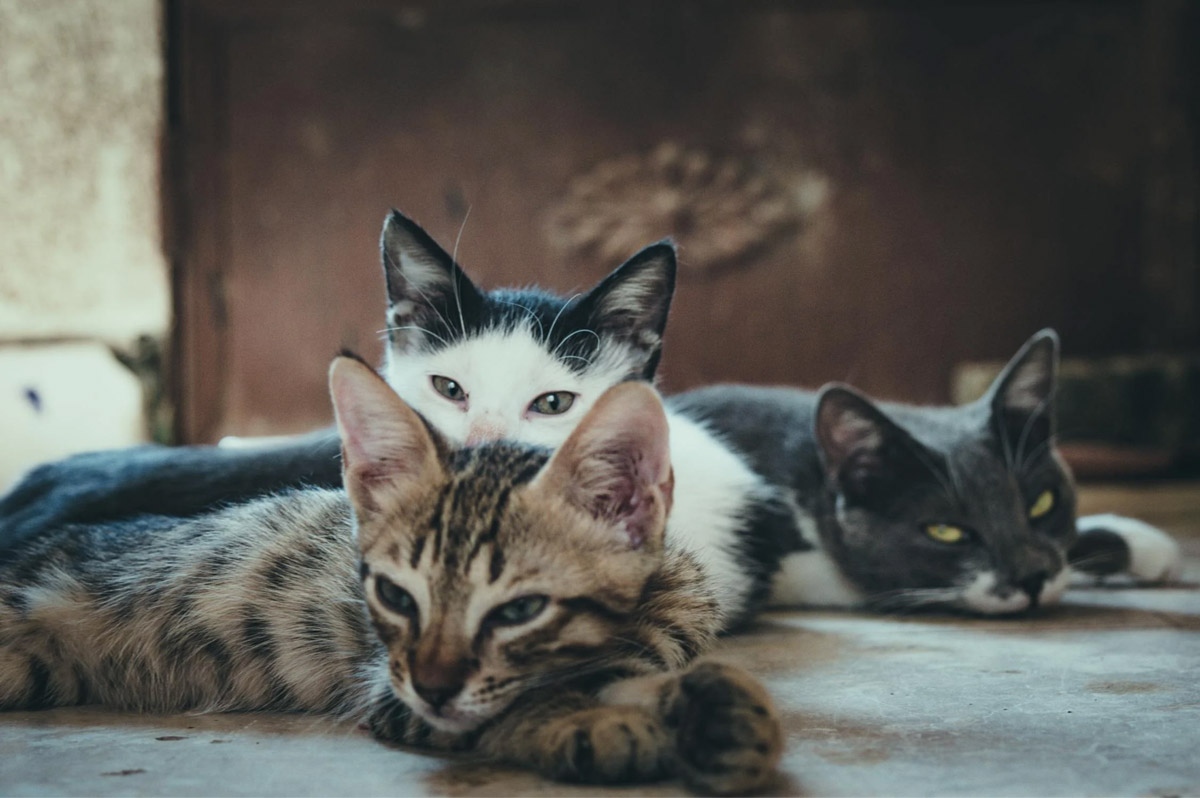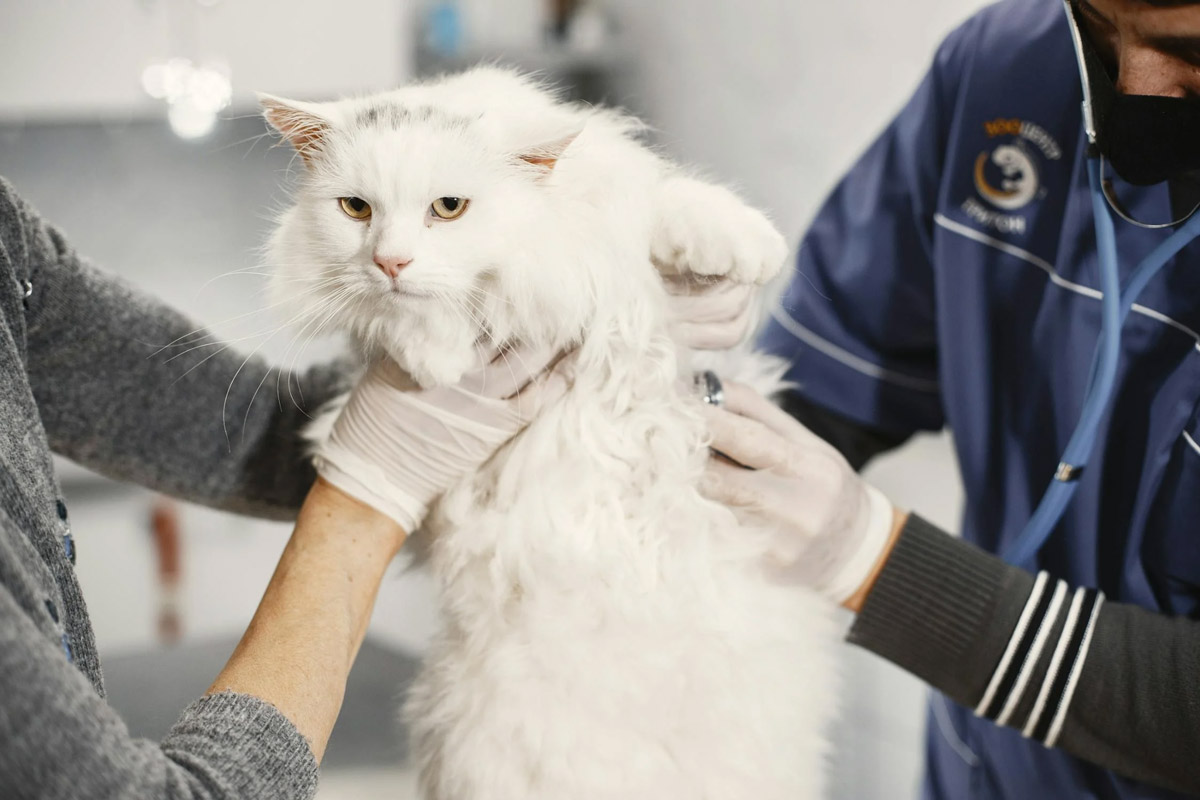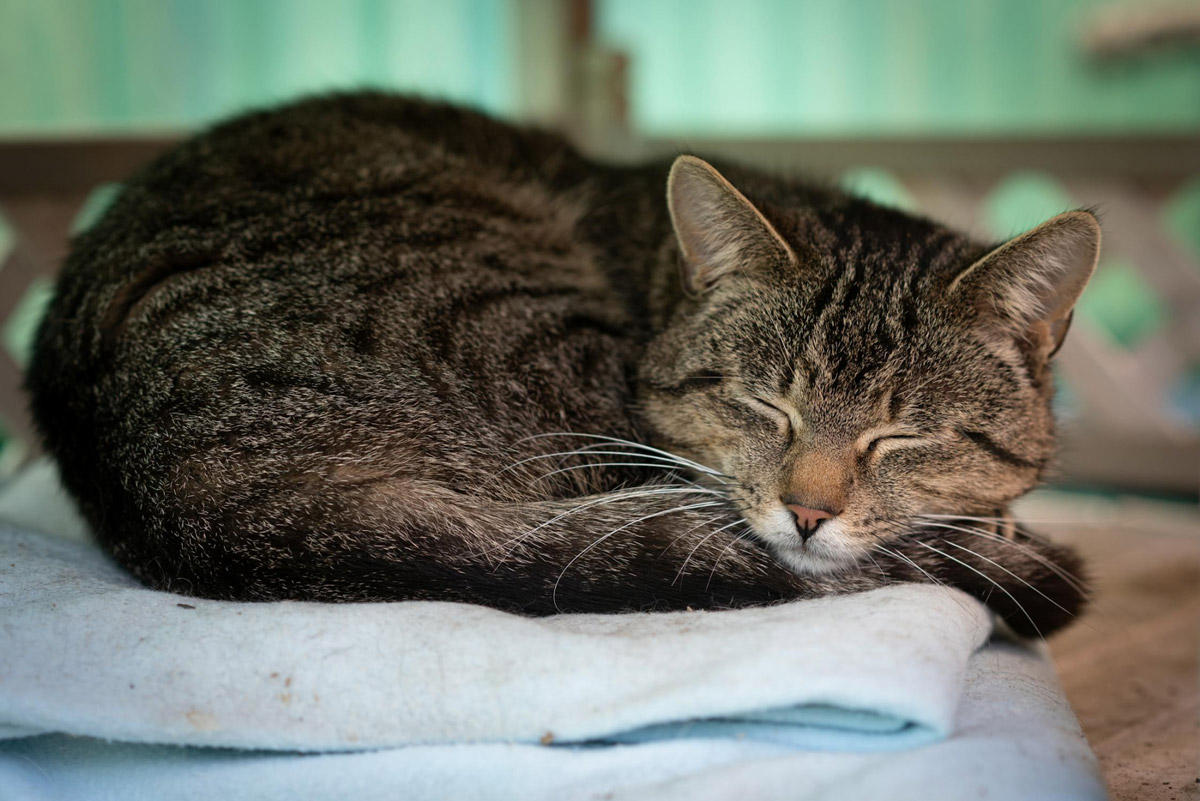Ringworm Infections In Pets: Symptoms And Treatment


Ringworm, despite its misleading name, is not caused by a worm. Rather, it’s caused by a group of fungi known as dermatophytes. These fungi infect the hair, skin, and nails of animals and humans, leading to a highly contagious and troublesome condition. Pets, particularly cats and dogs, are commonly affected by ringworm, making it essential for pet owners to recognise the symptoms and understand the treatment options available.
Understanding ringworm

Ringworm, also known as dermatophytosis, is a common (and usually non-threatening) fungal infection that affects the hair and skin. The most common fungi responsible for ringworm in pets include Microsporum canis, Microsporum gypseum, and Trichophyton mentagrophytes. These fungi thrive in warm and humid environments and can spread rapidly through direct contact with an infected animal or contaminated objects such as bedding, grooming tools, and furniture.
Symptoms of ringworm in pets

The symptoms of ringworm can vary depending on the severity of the infection and the animal’s immune response. Common signs to watch for include:
- Circular patches of hair loss: One of the most distinctive signs of ringworm is the appearance of round, hairless patches on the skin. These patches may be red, scaly, and inflamed, often with a distinct ring-like border.
- Itching and irritation: Infected pets may experience itching and discomfort, leading to excessive scratching or grooming.
- Brittle or broken hairs: The fungi weaken the hair shafts, causing the hairs to become brittle and break easily. This can result in uneven fur and a patchy appearance.
- Scaling and crusts: The affected areas may develop scales, crusts, or dandruff-like flakes. These are often accompanied by a rough texture to the skin.
- Nail involvement: In some cases, the fungi can infect the nails, causing them to become discoloured, brittle, and deformed.
- Spreading lesions: Without treatment, the lesions can spread to other parts of the body, including the face, ears, and tail.
It is important to note that some pets, especially cats, can be asymptomatic carriers of ringworm. This means they can harbour and spread the infection without showing any visible signs.
Diagnosing ringworm

If you suspect your pet has ringworm, seeking veterinary attention for a proper diagnosis is crucial. Veterinarians may use several methods to diagnose ringworm:
- Wood’s lamp examination: A special ultraviolet light called a Wood’s lamp can cause some species of dermatophytes to fluoresce, appearing as a greenish glow on the affected areas. However, this method is not definitive.
- Microscopic examination: A sample of hair or skin scrapings can be examined under a microscope to look for fungal spores.
- Fungal culture: This is the most accurate method for diagnosing ringworm. A sample from the affected area is placed in a culture medium and monitored for fungal growth. This process can take several days to weeks.
Treatment of ringworm in pets

Treating ringworm in pets involves a combination of topical and systemic therapies, environmental decontamination, and in some cases, isolation of the infected animal to prevent the spread of the infection.
- Topical treatments: These are applied directly to the affected areas and include antifungal creams, ointments, and medicated shampoos. Your vet may recommend shaving affected areas for ease of application. Regular application as prescribed by a veterinarian is crucial for the effectiveness of topical treatments. You can find these products at various pet shops in Singapore, ensuring you have everything you need for your pet’s care.
- Systemic treatments: In more severe cases or when topical treatments alone are insufficient, systemic antifungal medications may be prescribed. These oral medications work from within to combat the fungal infection. Your vet may request periodic blood tests to monitor the potential side effects of the medication.
- Environmental decontamination: Ringworm spores can persist in the environment for extended periods, posing a risk of re-infection. Thorough cleaning and disinfecting of the pet’s living area, bedding, grooming tools, and household surfaces are necessary. Vacuuming and using a bleach solution can help eliminate fungal spores.
- Isolation and monitoring: In households with multiple pets, isolating the infected animal can prevent the spread of ringworm. Regular monitoring of other pets for signs of infection and maintaining good hygiene practices are also important.
Preventing ringworm

Preventing ringworm involves minimising exposure to the fungi and maintaining good hygiene practices. Here are some tips to help reduce the risk:
- Regular veterinary check-ups: Routine health checks can help detect ringworm early and prevent its spread.
- Good grooming practices: Regular grooming and bathing can help keep your pet’s skin and coat healthy. Using clean grooming tools and avoiding shared items among pets can reduce the risk of transmission. For the best cat grooming in Singapore (or dogs, for that matter), it’s essential to choose a reputable service that prioritises the health and well-being of your pets.
- Clean living environment: Keeping your pet’s living area clean and dry can prevent the growth and spread of fungi. Regularly washing bedding and toys and disinfecting surfaces can help maintain a hygienic environment.
- Avoiding contact with infected animals: If you know an animal is infected with ringworm, avoid direct contact and wash your hands thoroughly after handling any animal.
- Prompt treatment of infections: If your pet shows signs of ringworm, seek veterinary care immediately to begin treatment and prevent the infection from spreading to other pets or family members.
Combat ringworm infections in your furry friends

Ringworm infections in pets are a common but manageable condition. By recognising the symptoms early and seeking prompt veterinary care, pet owners can effectively treat and control the spread of ringworm. Maintaining good hygiene practices and regular veterinary check-ups are essential for keeping your furry friends healthy and ringworm-free. Remember, a proactive approach to your pet’s health can make a significant difference in preventing and managing ringworm infections.







